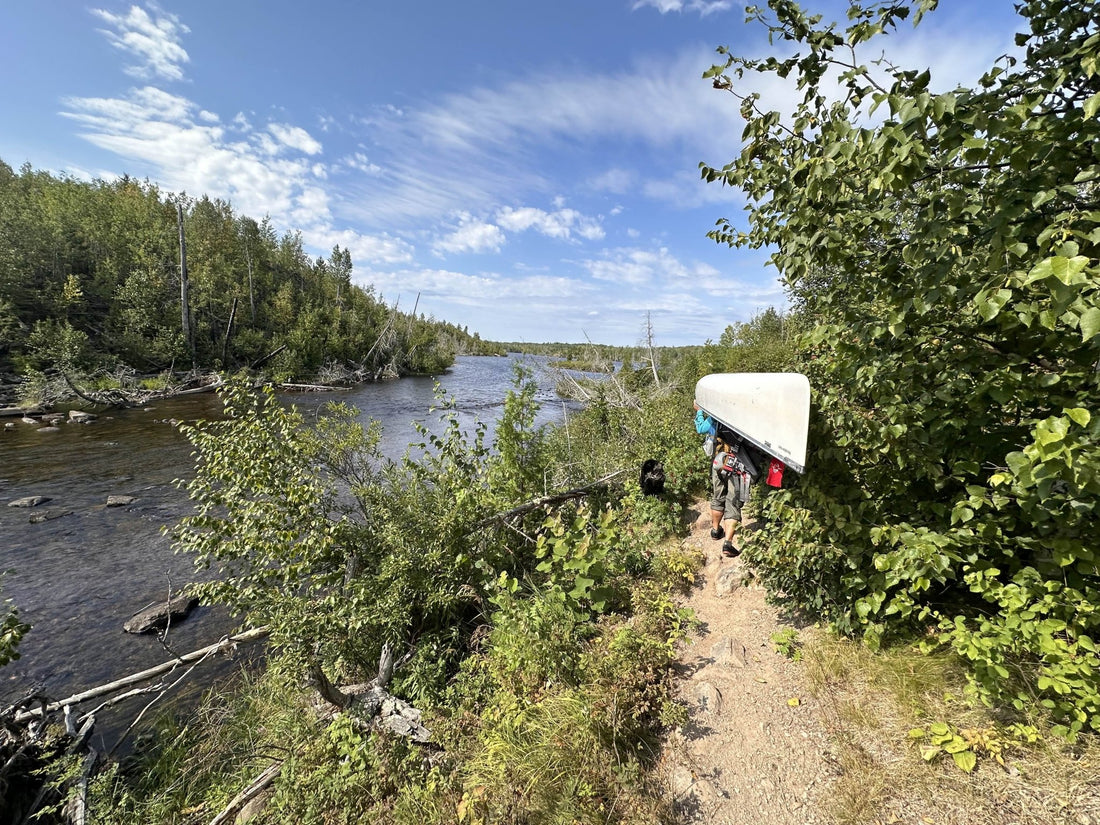
Navigating Portages in the BWCA: A Comprehensive Guide
Jerod ArlichShare
Portages are a key aspect of exploring the Boundary Waters Canoe Area (BWCA), offering both a challenge and an opportunity to experience the wilderness in its purest form. If you’re new to the BWCA or looking to improve your portaging skills, this guide will walk you through what portages are, how to locate them, tips for efficiency, safety precautions, and the etiquette that helps preserve this pristine environment.
1. What Are Portages?
In the BWCA, a portage is a trail that connects two bodies of water, allowing you to carry your canoe and gear overland from one lake or river to another. These trails can vary in length and difficulty, ranging from a few rods (a rod is approximately 16.5 feet) to several hundred rods, often traversing rocky terrain, steep inclines, and dense forest. Portages are an essential part of navigating the BWCA, as they enable you to explore the area’s vast network of interconnected waterways.
2. How to Locate Portages
Finding portages in the BWCA is relatively straightforward if you know what to look for:
• Maps: High-quality BWCA maps, such as those from True North Map Co., are your best friend. These maps clearly mark portage locations, distances, and terrain details. Familiarize yourself with your route ahead of time to identify where portages are and plan accordingly.
• Natural Markers: Look for clearings or breaks in the tree line along the shore, which often indicate the start of a portage. You might also notice paths worn into the ground from frequent use.
• GPS Devices: While traditional maps are essential, GPS devices can also help you locate portages, especially in more remote or less obvious areas.
3. Tips for Efficient Portaging
Efficiency at portages can save you time, energy, and stress during your trip. Here are some tips to streamline the process:
• Pack Smart: Distribute weight evenly across your gear. Use dry bags or portage packs designed for easy carrying. Prioritize waterproof and durable bags that are comfortable to carry over long distances.
• Organize Your Gear: Keep your gear organized so that you can quickly pack and unpack at each portage. Consider packing in layers or compartments to avoid rummaging through your belongings.
• Minimize Trips: Aim to carry all your gear in one or two trips to reduce the time spent at each portage. If necessary, portage in stages by carrying the heaviest items first and doubling back for the rest.
• Work as a Team: If you’re traveling with others, coordinate your efforts. One person can carry the canoe while another handles the gear. Communication is key to ensuring a smooth transition.
4. Safety Tips for Portaging
Portaging can be physically demanding, and safety should always be your top priority:
• Wear Proper Footwear: Sturdy, supportive footwear with good traction is crucial. The terrain can be uneven, rocky, and slippery, so avoid sandals or shoes that might cause you to slip or twist an ankle.
• Take Breaks: Don’t push yourself too hard, especially on long or difficult portages. Take breaks as needed, and stay hydrated. Overexertion can lead to fatigue or injury.
• Lift Carefully: When lifting your canoe or heavy packs, use proper lifting techniques to avoid straining your back. Bend at the knees, keep your back straight, and use your legs to lift.
• Watch Your Step: The trail can be narrow and obstructed by roots, rocks, and fallen branches. Watch your footing, and use a walking stick if you need extra stability.
• Know Your Limits: Be honest about your physical capabilities and don’t hesitate to take extra time or trips if needed. It’s better to be safe than to rush and risk injury.
5. Portage Etiquette
Respect for the environment and fellow adventurers is a cornerstone of BWCA portaging. Here are some key points of etiquette:
• Yield to Others: If you encounter another group on the trail, give way to those carrying heavy loads or canoes. Offer help if needed, but be mindful of their pace and space.
• Keep the Trail Clear: Once you reach the end of the portage, move your gear and canoe out of the way so others can access the trail. This is especially important at busy portages.
• Leave No Trace: Pack out everything you bring in. Don’t leave trash or gear behind, and avoid damaging the trail or surrounding vegetation. Stick to the established path to prevent erosion.
• Quiet Respect: Maintain a low noise level on the trail. The BWCA is a place of natural beauty and solitude, and keeping noise to a minimum helps preserve that peaceful atmosphere.
Conclusion
Portaging in the Boundary Waters Canoe Area is a skill that combines physical endurance with respect for nature and fellow adventurers. By understanding what portages are, how to locate them, and following best practices for efficiency, safety, and etiquette, you’ll be well-prepared to tackle the trails with confidence. Remember, each portage is an opportunity to connect with the land, challenge yourself, and contribute to the preservation of this incredible wilderness. Happy portaging!

1 comment
Thank you fornthis info. It would be helpful to learn what portage are wider, as we use canoe wheels as we are older.